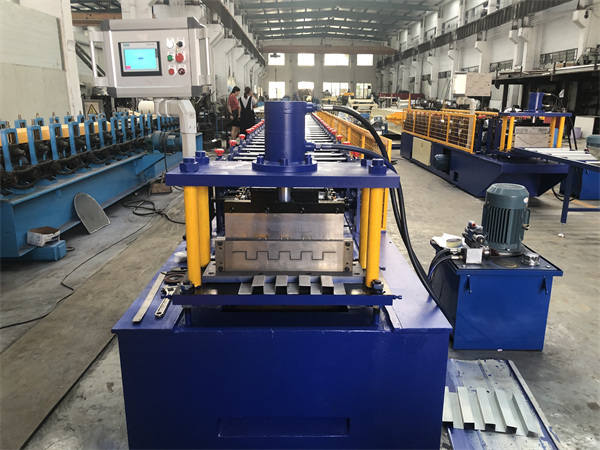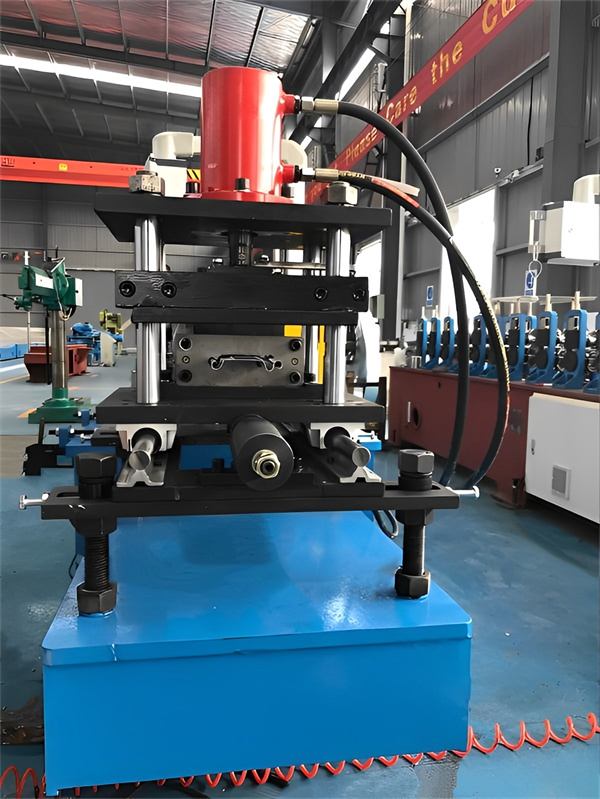Gutter systems play a crucial role in channeling rainwater away from buildings, preventing water damage and erosion. Gutter roll forming machines have revolutionized the manufacturing process of these essential components. In this article, we’ll delve into the world of gutter roll forming machines, exploring their mechanisms, benefits, operation, and more.
1. How Gutter Roll Forming Machines Work
Gutter roll forming machines are specialized equipment designed to shape flat metal sheets into continuous gutter profiles with precision. The process involves feeding a coil of metal through a series of rollers and dies, gradually forming it into the desired gutter shape. This automated process ensures consistency and accuracy in the final product.
2. Advantages of Using Gutter Roll Forming Machines
Gutter roll forming machines offer several advantages over traditional manufacturing methods:
- Precision: These machines produce gutters with precise dimensions, ensuring a seamless fit and effective water drainage.
- Speed and Efficiency: Automated production significantly speeds up the manufacturing process, increasing productivity and reducing lead times.
- Variety of Profiles: Gutter roll forming machines can create a wide range of gutter profiles, catering to diverse architectural styles and functional requirements.
- Material Savings: The precise shaping of gutters minimizes material wastage, leading to cost savings and environmental benefits.

3. Types of Gutter Profiles Produced by Roll Forming Machines
Gutter roll forming machines are capable of producing various profiles, including:
- K-Style Gutters
- Half-Round Gutters
- Box Gutters
Each profile serves specific aesthetic and functional purposes, catering to different architectural preferences and rainfall volumes.
Factors to Consider When Choosing a Gutter Roll Forming Machine
Selecting the right gutter roll forming machine involves considering factors like:
- Material Compatibility: Ensure the machine is suitable for the type and thickness of metal you plan to use.
- Profile Flexibility: Opt for a machine that can switch between different gutter profiles with ease.
- Production Capacity: Choose a machine that aligns with your production demands.
- Automation and Control: Advanced control systems enhance efficiency and reduce errors.
4. Steps to Operate a Gutter Roll Forming Machine
Operating a gutter roll forming machine involves a series of steps to ensure safe and efficient production of gutter components. Roll forming machines are used to shape continuous metal strips into specific profiles, such as gutters. Here’s a general outline of the steps involved in operating a gutter roll forming machine:
Note: Specific machines may have different features and controls, so always refer to the manufacturer’s manual for detailed instructions related to your machine.
- Preparation:
- Ensure that you have proper training and understanding of the machine’s operation and safety protocols.
- Wear appropriate personal protective equipment (PPE), such as gloves, safety glasses, and hearing protection.
- Inspect the machine for any damage or abnormalities. Make sure all parts are properly lubricated and in good working condition.
- Material Preparation:
- Load the metal coil onto the decoiler or unwind stand of the machine. Make sure the coil is properly aligned.
- Thread the leading edge of the metal strip through the roll forming station and into the entry guide rollers.
- Set Up Roll Forming Machine:
- Adjust the entry guide rollers to ensure proper alignment of the metal strip as it enters the roll forming station.
- Set the appropriate spacing and alignment for the forming rollers according to the desired gutter profile.
- Adjustments:
- Depending on the material thickness and desired gutter dimensions, you might need to adjust the roller pressure and position. Refer to the machine’s manual for guidance.
- Machine Controls:
- Familiarize yourself with the control panel of the machine. It might include buttons or switches for starting, stopping, emergency shutdown, and speed adjustment.
- Start-Up:
- Start the machine and observe the initial material feeding to ensure it’s properly aligned and passing through the forming rollers without issues.
- Monitor the forming process for any abnormalities, such as excessive vibrations or irregularities in the formed gutter shape.
- Quality Control:
- Regularly check the formed gutter profile for accuracy and consistency. Make adjustments as necessary to maintain quality.
- Inspect the edges and bends of the gutter for any defects.
- Material Feeding:
- Monitor the coil’s supply on the decoiler to ensure a continuous and smooth material feed. Replace the coil as needed.
- Output and Cutting:
- The roll forming process may lead to a continuous length of gutter. Depending on the machine setup, there might be an integrated cutting mechanism to produce gutter sections of the desired length.
- Collection and Packaging:
- Collect the formed gutter sections and stack them safely.
- If applicable, package the gutters to protect them during storage and transportation.
- Shutdown:
- After completing the production run or when making adjustments, stop the machine following proper shutdown procedures.
- Perform routine maintenance tasks, such as cleaning debris and lubricating components.

5. Maintenance and Care of Gutter Roll Forming Machines
To ensure the longevity and optimal performance of your gutter roll forming machine, regular maintenance is essential:
- Lubrication: Keep moving parts well-lubricated to reduce friction and prevent wear.
- Cleaning: Regularly clean the machine to remove debris and prevent build-up.
- Inspections: Periodically inspect components for signs of wear and replace as needed.
6. Common Issues and Troubleshooting
While gutter roll forming machines are reliable, some common issues may arise:
- Material Jamming: Clear any material obstructions in the machine’s feeding system.
- Uneven Profile: Adjust rollers and guides to ensure consistent shaping.
- Inaccurate Dimensions: Calibrate the machine to achieve the desired gutter dimensions.
7. Safety Precautions for Gutter Roll Forming Operations
Operating gutter roll forming machines safely requires:
- Proper Training: Ensure operators are trained in machine operation and safety protocols.
- Personal Protective Equipment (PPE): Operators should wear appropriate PPE, including gloves and safety glasses.
- Emergency Stop: Familiarize operators with the location of the emergency stop button.
8. Future Trends in Gutter Roll Forming Technology
The future of gutter roll forming is poised for advancements like:
- Smart Automation: Integration of AI and IoT technologies for enhanced automation and real-time monitoring.
- Energy Efficiency: Development of more energy-efficient machine models.
- Customization: Machines that allow on-the-fly customization of gutter profiles.
9. Case Studies: Successful Implementations of Gutter Roll Forming Machines
Several businesses have achieved success through the implementation of gutter roll forming machines:
- UrbanScape Homes: Increased production capacity by 40% after adopting advanced gutter roll forming technology.
- Architecto Solutions: Reduced material wastage by 25% and improved product quality using precision roll forming.
10. Environmental Impact and Sustainability of Gutter Manufacturing
Gutter roll forming aligns with sustainability goals due to reduced material wastage and energy-efficient processes. The metal gutters are also recyclable, contributing to a circular economy.
Comparing Gutter Roll Forming with Traditional Gutter Manufacturing
Gutter roll forming outperforms traditional methods in terms of efficiency, precision, and sustainability. Traditional manufacturing techniques often result in more material wastage and longer production times.

11. Conclusion
Gutter roll forming machines have revolutionized the gutter manufacturing industry, offering precision, efficiency, and sustainability. As technology continues to evolve, these machines will play a pivotal role in shaping the future of gutter systems, making them an indispensable component of modern architecture.
FAQs
- Q: Can gutter roll forming machines handle different types of metals?A: Yes, these machines can work with various metals like aluminum, steel, and copper.
- Q: Are gutter roll forming machines suitable for small-scale operations?A: Absolutely, gutter roll forming machines come in various sizes to accommodate different production scales.
- Q: How can I prevent gutter roll forming machine breakdowns?A: Regular maintenance, proper training of operators, and adhering to safety protocols can significantly reduce breakdowns.
- Q: Are the gutter profiles created by these machines customizable?A: Yes, modern gutter roll forming machines offer customization options for unique architectural needs.
- Q: What’s the typical lifespan of a gutter formed by a roll forming machine?A: With proper maintenance, gutter systems formed by these machines can last for several decades.
